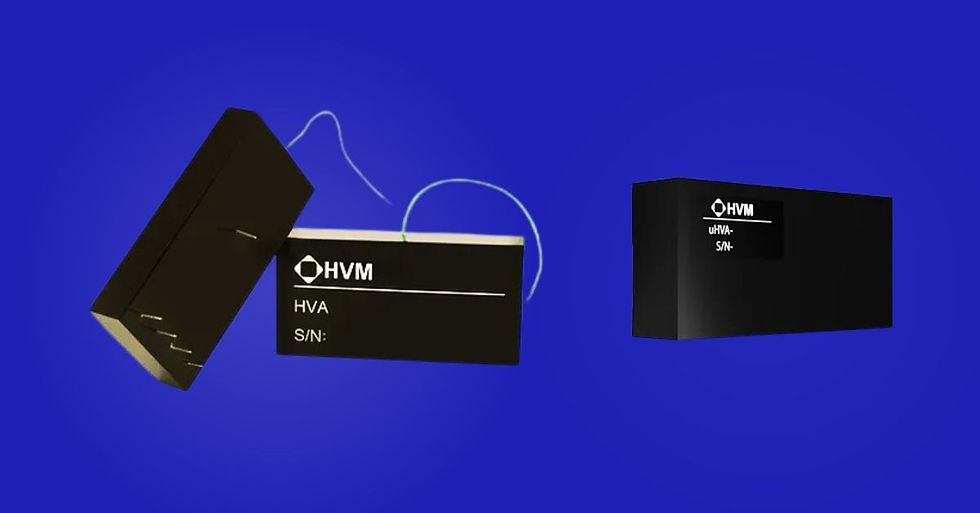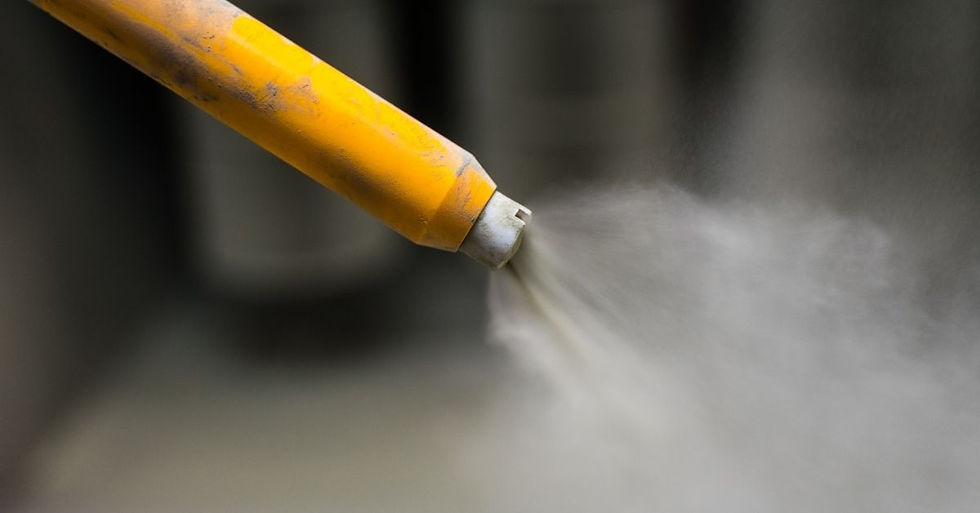What Are Electrostatic Sprayers and How Do They Work?
- Ryan Saldana
- Oct 25, 2024
- 4 min read
Updated: Jan 13

Efficiency and precision in technology are paramount in many industries, making electrostatic sprayers stand out as a beacon of innovation. These compact marvels, often no larger than a handheld device, have revolutionized various industries by offering superior spray coverage and efficiency. Keep reading to learn more about electrostatic sprayers and how they work and discover their benefits.
A Brief Introduction to Electrostatic Sprayers
An electrostatic sprayer is a device that charges liquid droplets, allowing them to better adhere to surfaces. Applying an electrical charge to the fluid, such as a liquid cleaning agent, introduces a positive charge to the droplets, making them stick to surfaces with a negative charge or vice versa. This electrical charge ensures an even and comprehensive coverage of the cleaning fluid. The general use of this technology is pivotal in modern settings where thorough and consistent spray application is necessary, such as in disinfection, agriculture, and industrial painting.
Tracing Its History and Development
The concept of electrostatic spraying traces back to the mid-20th century. Early innovations focused on industrial painting and coating applications. Over the decades, advancements in microelectronics and high-voltage systems propelled the development of more sophisticated miniature sprayers.
These improvements broadened the scope of applications, making them indispensable in fields demanding precise spray application. Their evolution stems from their adaptability and the growing significance of electrostatic sprayers in various sectors.
Understanding the Basic Principles of Electrostatic Spraying
The fundamental principle behind electrostatic spraying lies in the physics of electrical charges. The droplets repel each other because they each hold the same positive or negative charge, as previously described, allowing them to spread over the oppositely charged surface. The result is a fine, uniform mist that covers surfaces more effectively than traditional spraying methods.
Exploring Key Components of Electrostatic Sprayers
Electrostatic sprayers have numerous components, each vital in their functionality. The primary parts include a high-voltage power supply, an electrostatic nozzle, and a liquid reservoir.
The power supply generates the necessary charge to ensure the droplets adhere to the surface. In smaller applications with numerous components, miniature high-voltage power supply modules provide a sufficient charge in smaller sprayers.
The nozzle disperses the charged droplets depending on the micron measurement. The larger micron setting translates to a larger surface area and uses more liquid.
The reservoir holds the liquid, providing a sealed connection between the tubing and the nozzle. Understand the function of each component to comprehend how these sprayers achieve their remarkable results, and choose the best electrostatic sprayer for your application.

How Electrostatic Sprayers Work in Practice
Operating an electrostatic sprayer is simple despite its intricate function. The following occurs as you spray an electrostatic sprayer:
The liquid pumps from the reservoir through the nozzle.
The high-voltage power supply charges the liquid particles as they pass through the nozzle.
The charged droplets repel each other upon application, forming a fine mist, which surfaces with an opposing charge attract.
This process ensures even distribution and adhesion, making electrostatic sprayers incredibly effective for applications requiring precise coverage.
Delving Into Different Types of Electrostatic Sprayers
Electrostatic sprayers come in various forms, tailored to different needs and applications. Handheld models offer portability and convenience, ideal for smaller tasks or difficult-to-reach areas.
Backpack sprayers provide greater capacity and are suitable for larger-scale operations. Corded options ensure a constant power supply, while cordless models offer increased mobility. Each type has its advantages, catering to the diverse requirements of users across industries.
Applications in Various Industries
The versatility of electrostatic sprayers is evident in their wide-ranging applications. They provide farmers and food production facilities with an efficient way to apply pesticides and fertilizers, ensuring crops receive uniform treatment. Electrostatic sprayers are crucial in the healthcare and sanitation sectors for disinfecting various tools and equipment, reaching areas that manual cleaning might miss.
Industrial sectors benefit from their use in painting and coating, ensuring even coverage and reducing material waste. Electrostatic sprayers have many uses that enhance the effectiveness of a liquid’s coverage, as many objects require the application of various sprays to clean, coat, or lubricate.
The Benefits of Using Electrostatic Sprayers
One of the main advantages of electrostatic sprayers is their improved efficiency and coverage. Using charged droplets reduces overspray and ensures that more product reaches the intended surface.
This improvement enhances the liquid’s effectiveness and results in cost savings through reduced material use. Furthermore, the time-saving nature of these sprayers allows operators to cover larger areas in less time, increasing productivity and operational efficiency.

Examining Limitations and Challenges
Despite their many benefits, electrostatic sprayers are not without limitations. Potential drawbacks include the initial cost of investment and the need for regular maintenance to ensure optimal performance.
Environmental concerns also arise, as improper use leads to drift or unintended exposure to charged particles. Understanding these challenges is crucial for users to mitigate risks and make informed decisions about their use.
Safety Considerations
Safety is paramount when using electrostatic sprayers, given their high-voltage components. Users must adhere to best practices, such as wearing appropriate personal protective equipment (PPE) and following manufacturer guidelines. Wearing masks and protective eyewear is necessary when applying any spray.
Compliance with regulatory standards ensures safe operation and minimizes the risk of accidents. Awareness and adherence to these safety considerations help companies maintain a safe working environment while leveraging the benefits of electrostatic technology.
Maintenance and Care for Optimal Performance
Like any advanced machinery, electrostatic sprayers require routine maintenance to function effectively. Regularly cleaning the nozzles and checking electrical connections are simple yet essential practices.
Troubleshooting common issues, such as inconsistent spray patterns or power supply failures, prevents downtime and extends the equipment’s lifespan. Closely inspect the high-voltage power supply. This component is responsible for the spray’s efficacy and requires optimal function. Proper maintenance ensures these sprayers continue to deliver reliable performance across applications.
Knowing what electrostatic sprayers are and how they work will help you find the best use for them. These sprayers represent a significant advancement in spray technology, offering unparalleled efficiency and coverage. Understanding electrostatic sprayers opens doors to new possibilities for many professionals in various industries.
Considering their benefits and potential, these devices are indispensable tools in the technological landscape. Browse our replacement high-voltage power supplies for your electrostatic sprayers at HVM Technology and keep your electronics running.

Comentarios